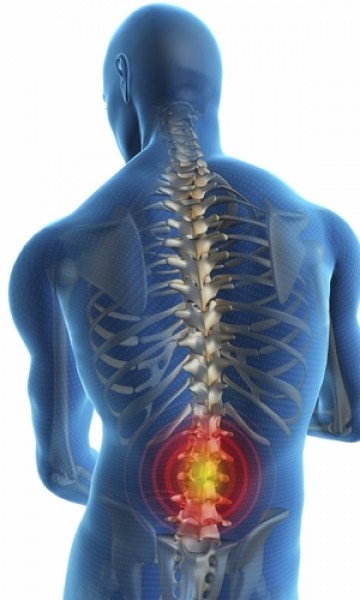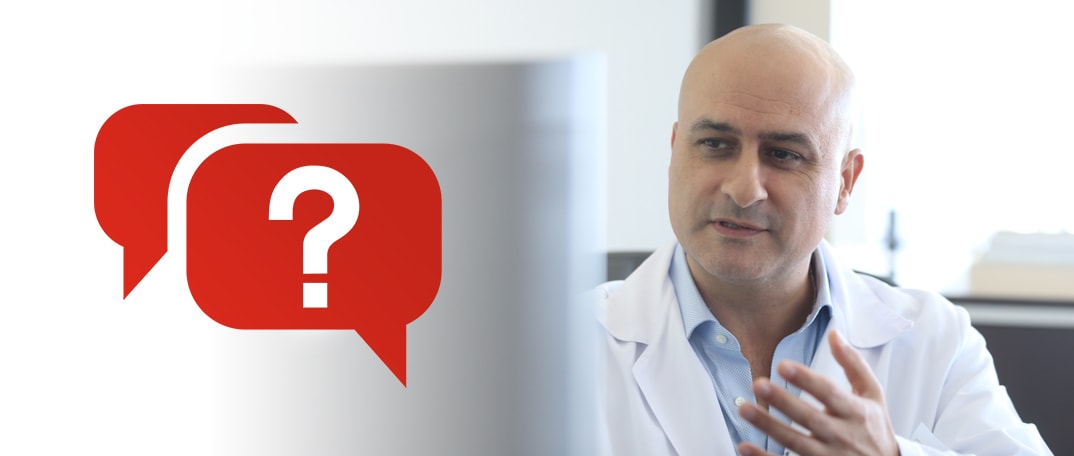 Early diagnosis in lumbar herniated disc is very important, because early diagnosis assures deciding on the appropriate treatment in the shortest time. Patients benefit more from surgery with proper timing. Treatments after a certain period of disease may alleviate pain but other symptoms of disease like numbness and weakness can take time to recover. Therefore, early diagnosis and early surgical treatment, if necessary, have vital importance.
Early diagnosis in lumbar herniated disc is very important, because early diagnosis assures deciding on the appropriate treatment in the shortest time. Patients benefit more from surgery with proper timing. Treatments after a certain period of disease may alleviate pain but other symptoms of disease like numbness and weakness can take time to recover. Therefore, early diagnosis and early surgical treatment, if necessary, have vital importance.
Lumbar herniated disc is the herniation of the disc tissue that sits between bones of the spine and balances the weight of the body, moving towards the neighboring nerves and compressing them.
Spine carries the weight of human body. So, the weight that the lower back region bears, forceful movements and bending distorts the disc structure. Rarely, certain accidents can cause lumbar herniated disc.
Age, obesity, familial predisposition, genetic characteristic, spinal structure is important in development of lumbar herniated discs and their symptoms.
What are the signs of lumbar herniated discs?
- Back pain
- Usually one-sided, sometimes two-sided pain that starts from within the hip and radiates towards the leg
- Numbness, weakness and rarely burning and pins-and-needles sensation in the legs and feet.
- Trouble walking
- In advanced and untreated patients, being unable to void or urinary incontinence.
How are lumbar herniated discs diagnosed?
- Examinations
- Advanced imaging techniques (computerized tomography and magnetic resonance imaging). The value of imaging techniques increases with the evaluation and interpretation of the related specialist. Symptoms of lumbar herniated discs usually reside in first 8 to 12 weeks, so advanced investigations should only be performed in patients considering operation.
What are the treatment options of lumbar herniated discs?
- Medical treatment
- Bed rest
- Physical therapy and rehabilitation
- Surgery
How are lumbar herniated disc surgeries performed?
Today, lumbar herniated disc surgeries can be performed safely. The most reliable and widely accepted surgical technique with best results is “microsurgery”, commonly known as “closed surgery”. This surgery lasts for 30 minutes and is performed with a 1.5 cm incision under a microscope. It is 10% successful in experienced hands. Severe pain of the patient that radiates to the leg disappears immediately and completely after surgery. The basis of lumbar herniated disc surgery is removing and cleaning the piece of cartilage that herniates between spinal bones, moves towards and compresses nerve tissue and therefore relieving the nerves. In these patients, injecting certain materials (ozone gas etc) to the back with a needle causes more damage than benefit. These materials that are injected to melt the cartilage compressing the nerves won’t melt the herniating piece and damage the fragile nerves compressed by the cartilage. So, removing the herniated cartilage tissue under a microscope with experienced hands will be the right approach.
What is the success rate of lumbar herniated disc surgeries?
With the right indication, or in other words, with right patient selection, benefiting from lumbar herniated disc surgeries is 100%. Rarely (1 in 300-400 patients), problems like relapse or infection can be seen.
When does a patient recover after surgery?
In the last 15-20 years, the introduction of diagnostic techniques like computerized tomography and magnetic resonance imaging provides great convenience in locating lumber herniated discs and their differential diagnosis. With advances in surgical techniques parallel to this, lumber herniated disc surgeries are no longer feared. Hospital stay gets shorter and patients can get back to their daily lives in a short time. Patients who undergo surgery with microsurgical techniques can go back to work in mostly a week.
Recommendations for patients with lumber herniated disc patients:
- You should consult a center or a specialized physician that can accurately diagnose the cause of back pain.
- If the cause of back pain is lumber herniated discs, whether it requires surgery should be revealed. Not all herniated discs mean surgery.
- In situations not requiring surgery, bed rest, medical treatment or sometime physical therapy may be sufficient.
- In situations requiring surgery, the most valid and reliable technique is the closed microsurgery technique performed under microscope. Endoscopic methods or techniques for burning the disc are now abandoned because of high risk of relapse.

